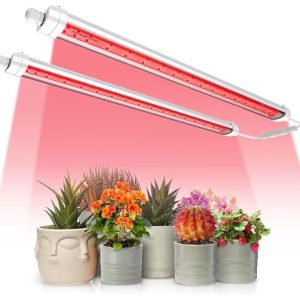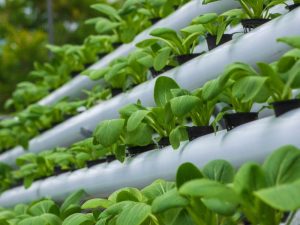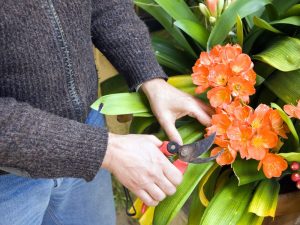Last Updated on September 17, 2024 by teamobn
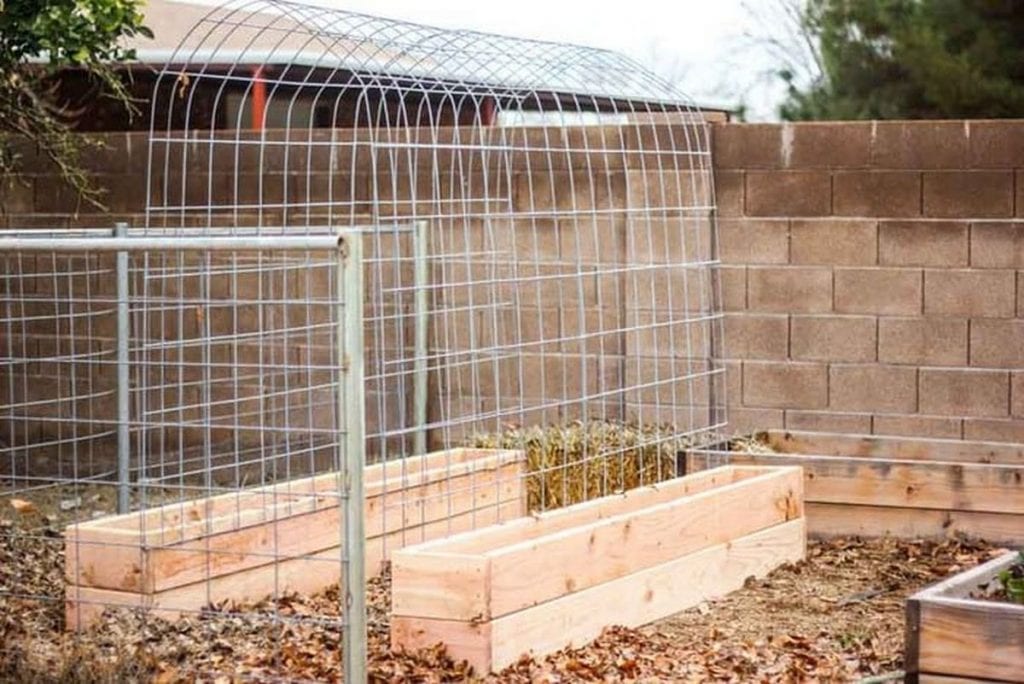
When starting a garden, the effort you put in today will be rewarded when your plants have started growing. If you plant flowers, your reward will be a colorful display of nature’s beauty. If, on one hand, you plant vegetables, your reward will be a fresh set of crops every harvest season.
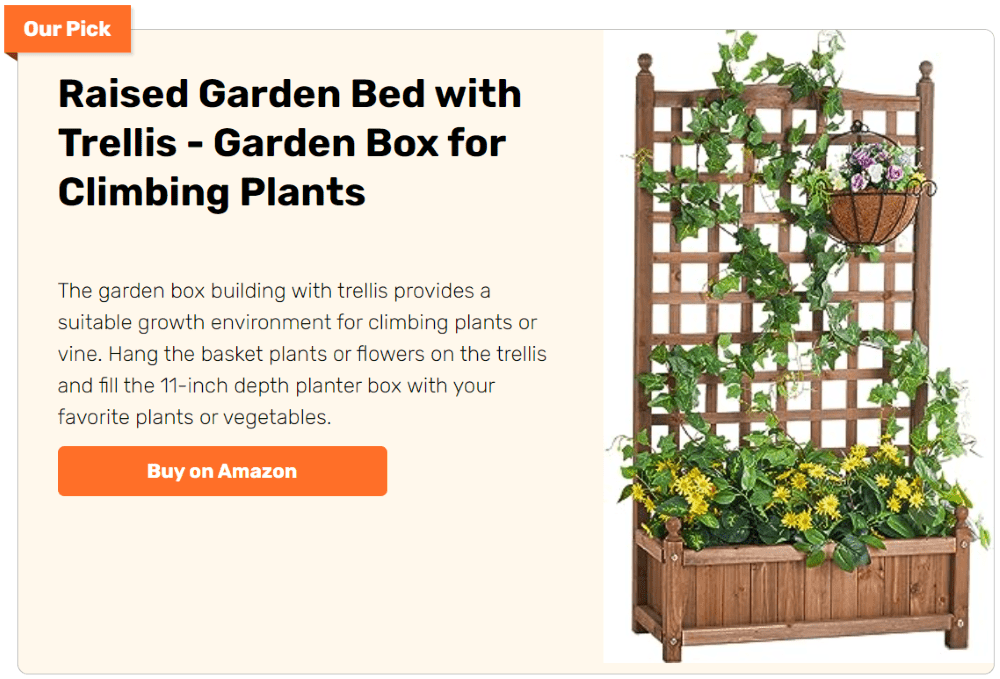
Growing plants, however, requires dedication from start to finish. However, there are a lot of ways that you can employ to make the process pain-free. For example, instead of bending all the way to the ground, why not make use of raised garden boxes to protect your back? To take it up a notch, install trellises to the boxes so your plants can climb on them, too.

Furthermore, raised garden boxes with trellises will make harvesting a lot easier. When the plants are all grown and have fully climbed onto the trellises, you also get a shady spot where you can sit down and relax.
Building a Trellis and Raised Garden Box Combo
Contents
Materials
- 9 pcs of 2″ x 8″ x 8′ Douglas Fir Timber
- 2 pcs of 4′ x 16′ Cattle Farm Panels
- Star Bit
- Deck Screws
- U-Nails
Tools
- Hammer
- Drill
- Circular Saw
Instruction
Step 1: Measure and Cut the Timber
Use your circular saw to cut the 8-foot Douglas Fir timber pieces to the desired dimensions for your raised garden box. A common size for a garden box is 4’ x 8’, so cut 4 of your timbers to 8 feet and 4 of them to 4 feet.
Step 2: Assemble the Raised Garden Box Frame
Lay out the cut timber pieces on the ground to form a rectangle. Position the 8-foot pieces as the long sides and the 4-foot pieces as the short sides. Make sure the edges are flush. Use your drill and star bit to fasten the pieces together with deck screws at the corners. For a stronger structure, pre-drill the holes to avoid splitting the wood.
Step 3: Build the Height of the Box
Stack a second layer of timbers on top of the first one, using deck screws to secure them. The finished height should be around 16 inches, giving enough depth for your plants’ roots to grow. Use additional screws to secure the two layers together, ensuring a solid structure.
Step 4: Prepare the Trellis Panels
Take your 4′ x 16′ cattle farm panels and cut them to fit the width of your raised garden box using a saw or bolt cutters. Ideally, you want them to be around 4 feet wide and at least 6 feet tall, depending on how high you want your trellis to be.
Step 5: Install the Trellis Panels
Stand the panels vertically at one end of the garden box, ensuring they’re centered. The trellis will allow climbing plants to grow vertically. Use U-nails and a hammer to attach the panels securely to the back of the raised garden box. Make sure the trellis is firmly anchored and won’t tip over.
Step 6: Reinforce the Trellis
To strengthen the trellis, you can drive extra U-nails along the sides of the panel and attach it more securely to the sides of the box. This will ensure stability, especially when the plants get heavy as they grow.
Step 7: Optional: Add Cross Supports
If you want additional support for climbing plants, you can add horizontal wooden slats between the cattle panels. Cut extra timber pieces to fit horizontally across the trellis and fasten them with U-nails or deck screws.
Step 8: Fill the Garden Box
Once the structure is secure, fill the raised garden box with high-quality soil and compost, leaving about 2-3 inches at the top. Make sure to mix the soil well to ensure proper drainage and nutrient distribution.
Step 9: Plant and Train Your Plants
Plant your climbing vegetables or flowers at the base of the trellis. As they grow, gently guide them towards the trellis, securing the vines if needed, to encourage vertical growth.
Click on any image to start the lightbox display. Use your Esc key to close the lightbox.


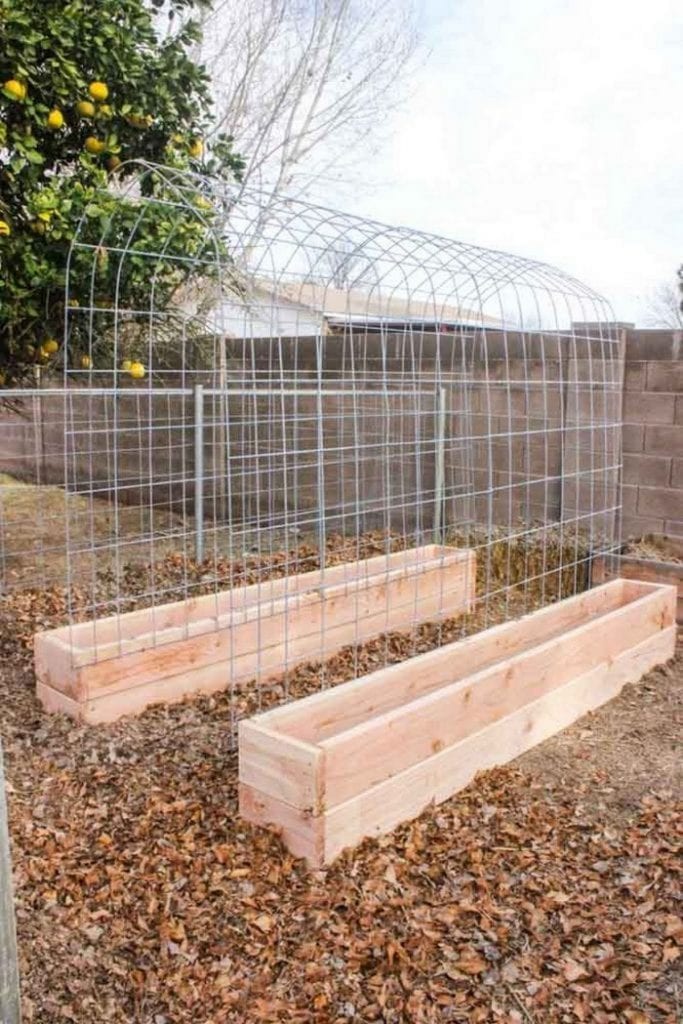
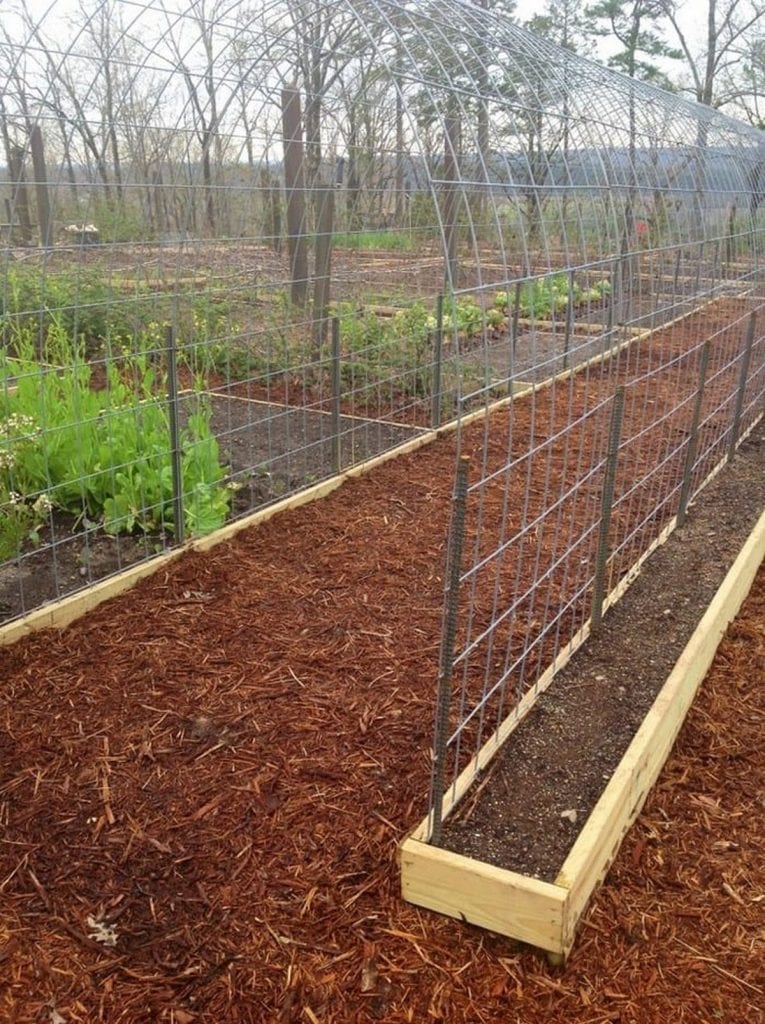
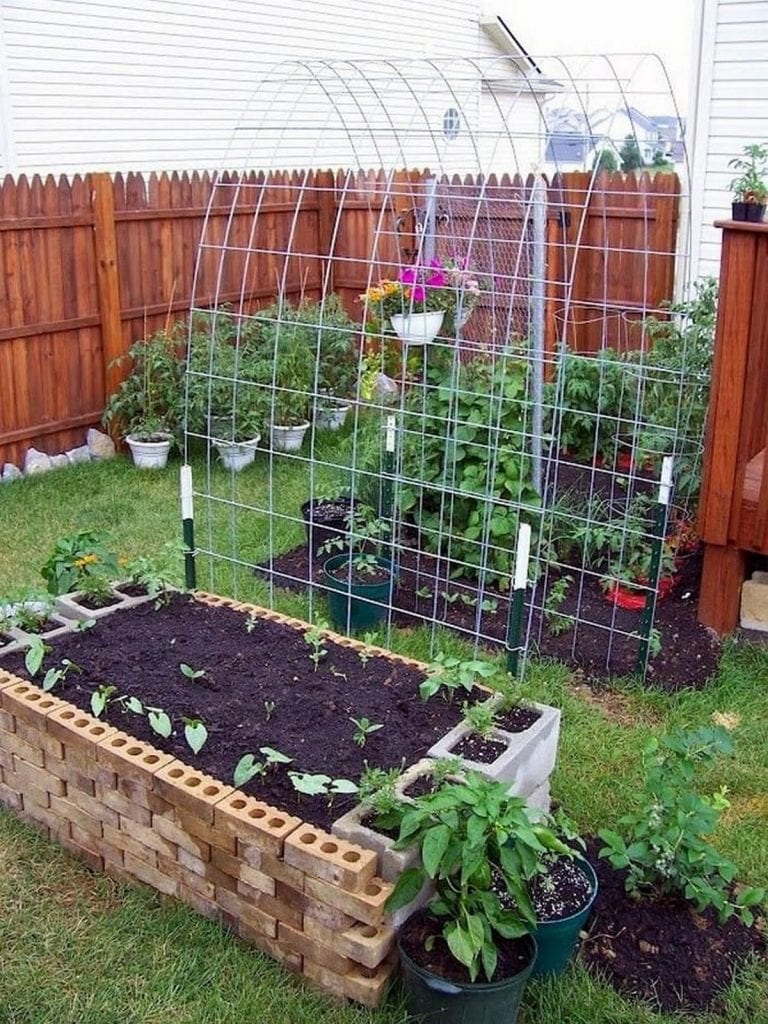
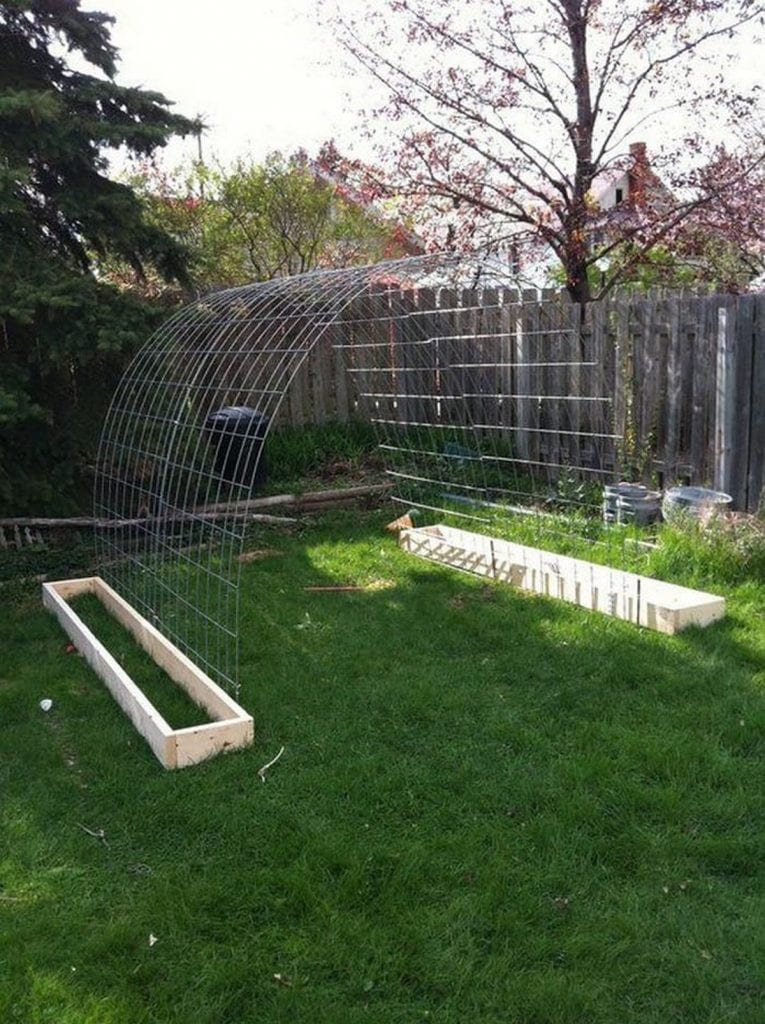
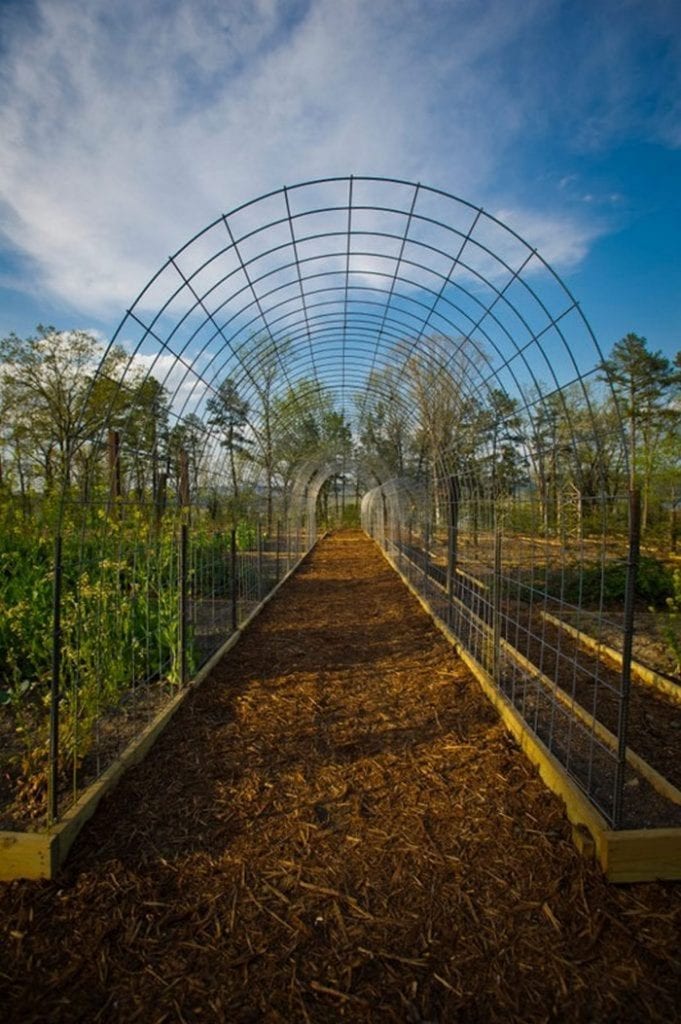
You can get step-by-step instructions from DaNelle Wolford over at Weed’em & Reap…
Benefits of a Trellis and Raised Garden Box Combo for Small Space
If you’re looking for an efficient way to garden in a small space, a trellis and raised garden box combo offers the perfect solution. Whether you have a small backyard, patio, or even a balcony, combining vertical gardening with raised garden boxes helps maximize your planting area. This setup not only saves space but also offers several benefits that make gardening easier and more enjoyable.
Let’s explore how a trellis and raised garden box combo can transform your small garden into a thriving oasis.
Maximizing Vertical Space
One of the biggest advantages of a trellis and raised garden box combo is the ability to grow plants vertically. In small spaces, the ground area is often limited, so growing plants upward rather than outward allows you to cultivate more varieties without overcrowding. Climbing plants like tomatoes, beans, and cucumbers benefit greatly from trellises.
They’ll have more room to spread out and access sunlight, which can lead to healthier growth and larger harvests. By incorporating a trellis into your raised garden box, you’re making the most out of every square inch.
Improved Plant Health
The trellis and raised garden box combo promotes better airflow and sunlight exposure for your plants. When plants grow vertically, air circulates more freely around the foliage, reducing the risk of diseases like powdery mildew or root rot that often occur when plants are crowded together on the ground.
Additionally, plants on a trellis get more sunlight as they climb, helping them to grow stronger and produce more fruits or flowers. The raised garden box adds another level of protection by keeping roots elevated from damp soil, which further reduces the chances of root-related diseases.
Easier Maintenance and Harvesting
Gardening in a small space can be challenging when it comes to maintenance, but a trellis and raised garden box combo simplifies the process. With plants elevated and growing vertically, you’ll find it easier to water, prune, and inspect for pests.
You won’t have to bend down as much, which is especially helpful for those with mobility issues. When harvest time comes, reaching your fruits and vegetables on the trellis is far more convenient than searching through ground-level foliage. The elevated height of the garden box also means fewer weeds, making the overall maintenance of your garden less time-consuming.
Efficient Use of Soil and Water
In a small space, you need to make the most of the resources available, and a trellis and raised garden box combo helps you do just that. The raised garden box allows you to control the soil quality, ensuring that your plants have the nutrients they need to thrive. Raised beds also drain better than in-ground gardens, preventing waterlogging.
This improved drainage means you can water less frequently while still keeping your plants healthy. With the addition of a trellis, plants will grow more efficiently, using water and nutrients more effectively as they climb upwards instead of sprawling across the ground.
Aesthetic Appeal and Versatility
A trellis and raised garden box combo doesn’t just improve your gardening experience; it also enhances the visual appeal of your small space. Vertical gardens create a sense of depth and height, making small areas appear larger. You can experiment with different plant combinations—mix climbing vegetables with flowering vines, or use the garden box for herbs and the trellis for decorative plants.
This setup brings structure and beauty to your garden, creating a charming focal point that’s functional and stylish. Plus, the versatility of a trellis and raised garden box combo allows it to fit seamlessly into any small space, whether it’s a backyard corner or a city balcony.
Incorporating a trellis and raised garden box combo into your small space garden is a practical and visually pleasing solution. It allows you to grow more plants in less space while improving plant health, reducing maintenance, and making the most of your available soil and water. The result is a thriving, beautiful garden that maximizes every inch of your space.

Best Plants to Grow in a Trellis and Raised Garden Box Combo
A trellis and raised garden box combo offers the perfect setup for gardeners who want to maximize their space. This system combines the benefits of vertical gardening with the convenience of raised beds, allowing a wide variety of plants to thrive. Choosing the right plants is key to maximizing your garden’s potential.
Here are some of the best plants to grow in a trellis and raised garden box combo that will take full advantage of this efficient design.
Tomatoes
Tomatoes are a top choice for any trellis and raised garden box combo. These plants grow best when they have vertical support, and a trellis gives them exactly that. As the tomato vines grow, they’ll naturally climb the trellis, keeping the fruits off the ground and reducing the risk of rot or pests.
Choose indeterminate tomato varieties, which continue growing throughout the season, for optimal use of the vertical space. The raised garden box helps ensure the soil is well-drained and rich in nutrients, giving your tomatoes the perfect environment to produce a bountiful harvest.
Cucumbers
Cucumbers are another excellent option for a trellis and raised garden box combo. These plants love to climb and will quickly cover a trellis, saving you space in the garden. Vertical growing helps the cucumbers stay cleaner and healthier, as they won’t sit on the damp ground.
Additionally, growing cucumbers on a trellis improves airflow around the plants, which helps prevent diseases like powdery mildew. The raised garden box allows for easy watering and ensures that the soil stays loose and well-drained, providing the ideal conditions for cucumber growth.
Peas
Peas, particularly the climbing varieties, are well-suited for a trellis and raised garden box combo. Whether you’re growing snow peas, snap peas, or shelling peas, these plants will happily climb the trellis, allowing you to make the most of your vertical space.
Peas are relatively lightweight, so they won’t need a particularly strong trellis. Planting them in a raised garden box ensures they get the well-drained, loose soil they prefer. As they grow, they’ll cling to the trellis with tendrils, making harvesting easy and accessible.
Beans
Beans, especially pole beans, thrive in a trellis and raised garden box combo. These plants are natural climbers, and they’ll quickly cover the trellis with little effort on your part. Pole beans grow taller and produce more over a longer period than bush varieties, making them a great choice for vertical gardening.
The raised garden box ensures proper drainage and allows you to control the soil’s nutrient levels, giving your beans the best chance to flourish. Beans also fix nitrogen in the soil, benefiting other plants in the garden.
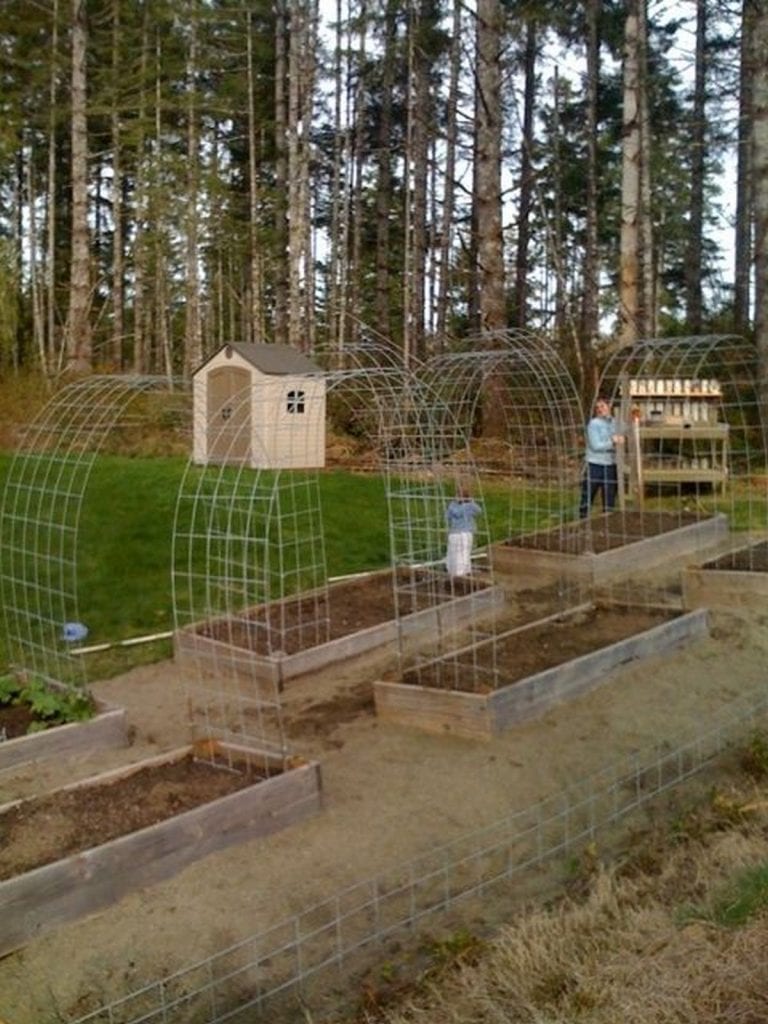
Squash
Certain varieties of squash, like zucchini or winter squash, do well in a trellis and raised garden box combo. These vining plants often take up a lot of ground space, but by growing them vertically on a trellis, you can free up room in your raised garden box for other plants.
The trellis keeps the squash off the ground, reducing the risk of rot or pests and making it easier to spot ripe fruits. The raised garden box ensures that the squash plants have well-drained soil and ample nutrients to support their growth.
Flowering Vines
Don’t forget about the aesthetic possibilities of a trellis and raised garden box combo. Flowering vines such as morning glories, clematis, and sweet peas can add beauty and fragrance to your garden while utilizing vertical space.
These plants will climb the trellis effortlessly, creating a stunning display of blooms. Growing them in a raised garden box gives you better control over the soil conditions, ensuring they have the nutrients they need to produce vibrant flowers.
A trellis and raised garden box combo provides a versatile and efficient way to grow a wide variety of plants. From vegetables like tomatoes, cucumbers, and beans to flowering vines, this setup maximizes space while improving plant health and productivity. By selecting the right plants, you can make your garden both productive and beautiful.
Conclusion
Building a trellis and raised garden box combo is a simple way to maximize your garden’s space and productivity. It offers a functional and attractive structure that supports plant growth while making maintenance easier. With the right materials and plants, you can create a thriving garden that fits perfectly into small or large spaces.

